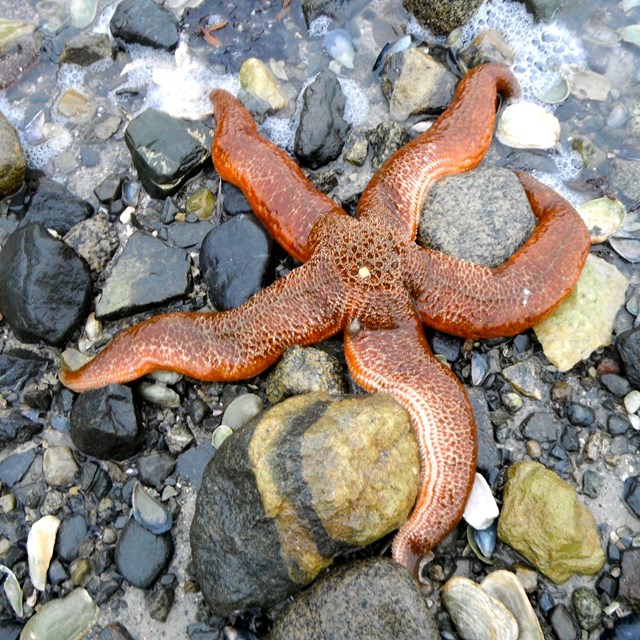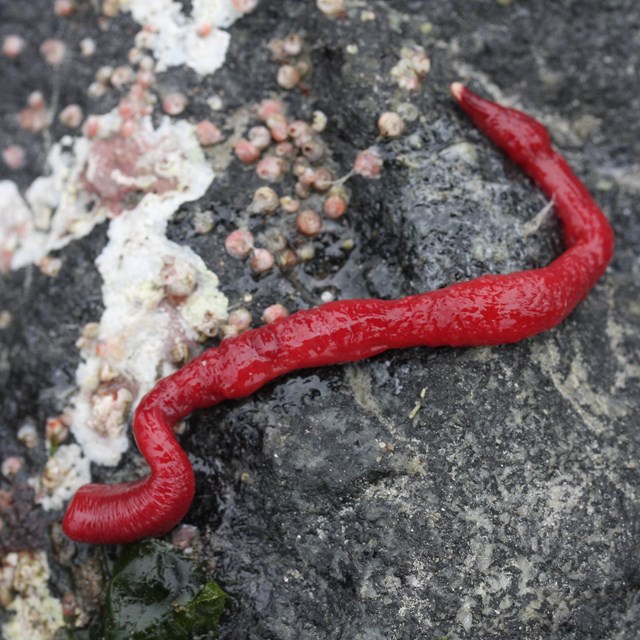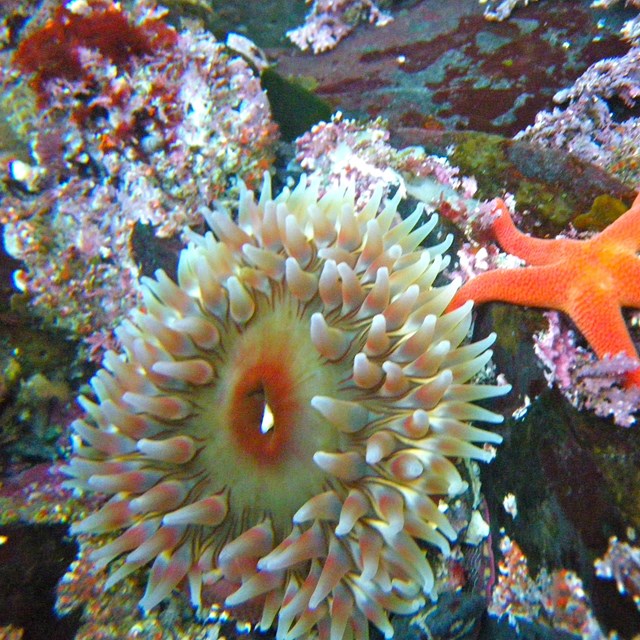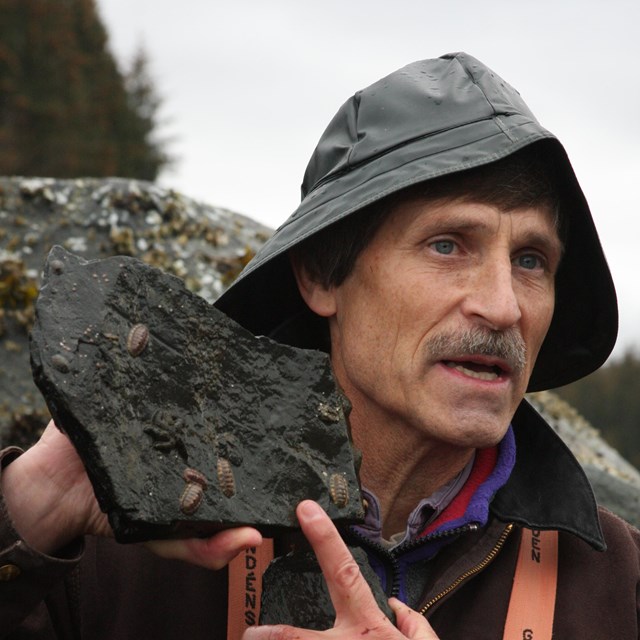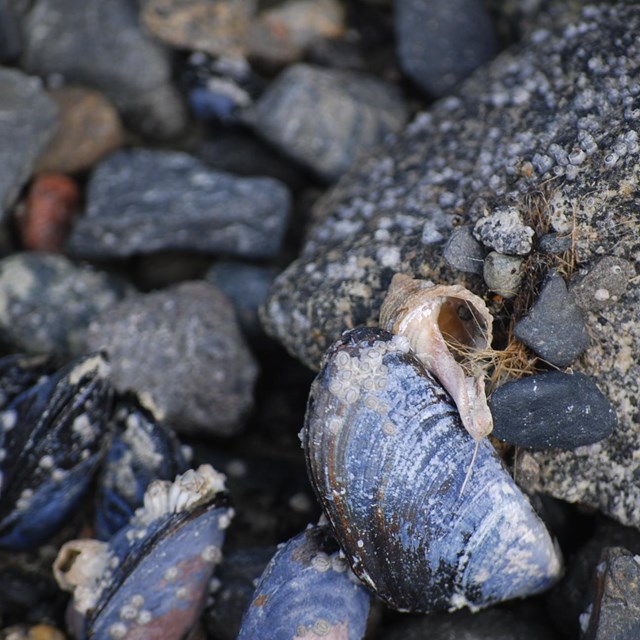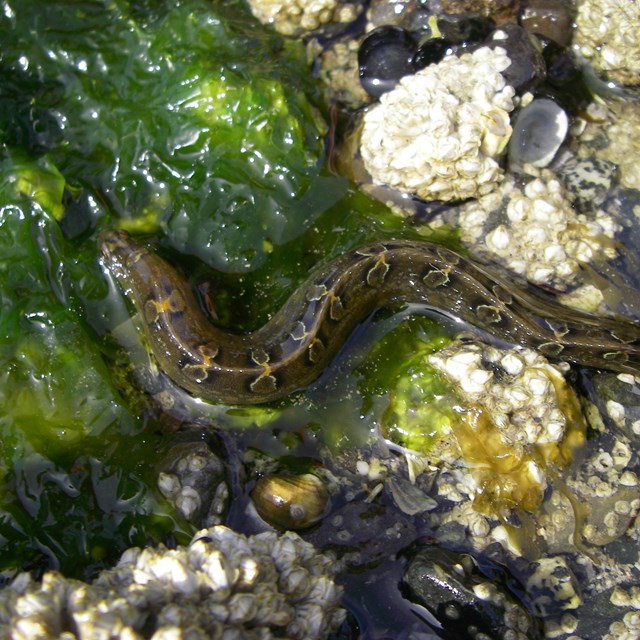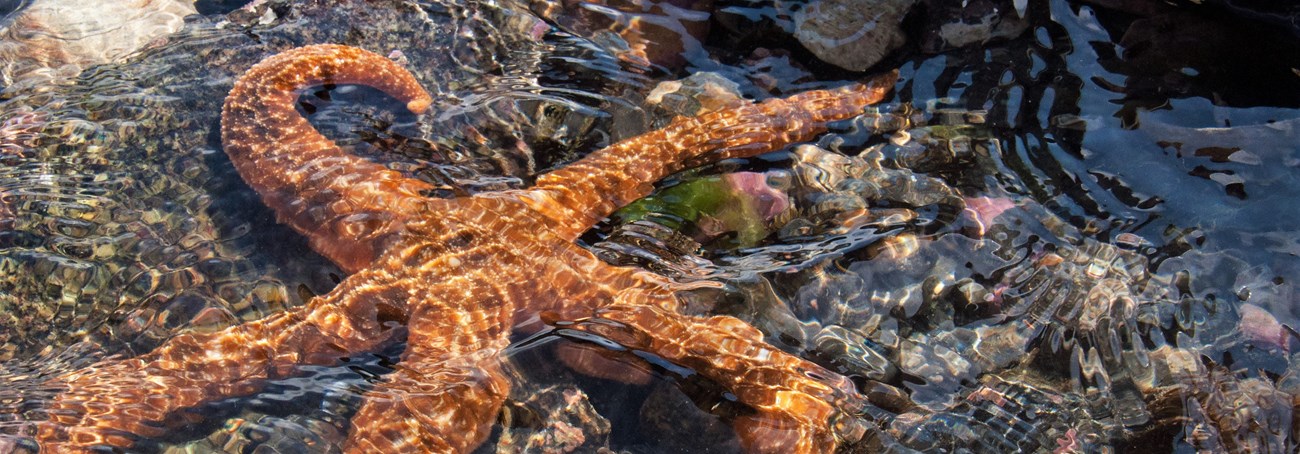
Adapted from the 1979 Intertidal Life of Bartlett Cove Publication The shores of Bartlett Cove can be visited during any low tide, but the level of a low tide varies greatly from day to day. On some days, even at low water, many of the most interesting organisms will be submerged. About every two weeks, however, the tides cycle through extreme highs and lows, offering an exceptional chance to discover the intertidal world. In the summer, a morning walk when the tide is lowest is the best time to see many of the marine creatures that populate in the tidal pools of Bartlett Cove. One of the most interesting areas to explore is along the channel running from along the beach near the park headquarters. The lagoon channel can be waded at extreme low tide, but quickly fills back in as the tide comes in. It’s easy to become stranded on Brown Island if not careful! The channel leading out from Bartlett River has a rich community as well and is worth a visit. The floating docks have many kinds of interesting plant and animal life to observe as well. When exploring these areas, keep in mind the impact you may have on the intertidal life and choose your steps carefully. Intertidal Animals & Plants
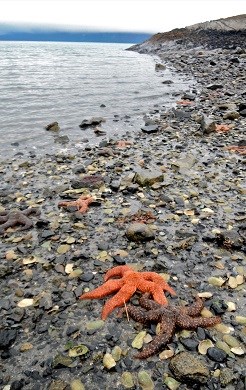
TidesTides are the ruling life force of the intertidal zone. Where the waters reach determines what organisms can be found where, and makes the ecosystem a dynamic battleground of survival. In addition to the predation, struggle for resources, and turbulent power of waves, the organisms that make their home in the intertidal must also face drying out, overheating, freezing, and being inundated with fresh water as the tides move in and out. In the low intertidal zone, species may only be exposed to air during the most extreme tidal fluctuations. In contrast, along the high intertidal zones, organisms may spend more time above water than under it. Some marine life can move with the tide line, remaining under water most of the time. But even such mobile animals such as starfish and snails are frequently exposed as the tides ebb, and seek out the wettest areas for protection at low tide. Snails may move into tide pools, moist crevices, or under rocks to avoid drying out in the sun and wind. For sessile animals like barnacles that are permanently fixed to one spot, trapping moisture before the tide retreats and leaves them to dry out is essential to their survival. Limpets trap small amounts of water in their shell and the rock they attach to in order to stay moist, or close the opening of their shells to keep in water. Small fish wait out the low tide by ducking under rocks and in tide pools, or burrowing into mussel beds that have trapped water. While the tides govern the life of intertidal species, the tides themselves are ruled by a much greater force: gravity. As the earth orbits the sun and the moon orbits earth, the pull of their masses exert gravitational attraction on the oceans of the world. The moon, while smaller, has about ten times the gravitational pull of the sun because of its proximity and is the main driving force of our tide cycles. The cycles follow the 24-hour and 50-minute lunar day. Once about every two weeks, the sun and moon align. During these times, at full and new moons, the range of the tides is at its greatest. We call these the “spring tides,” and Glacier Bay has some of the largest tidal ranges in the world. In Bartlett Cove, the point from the lowest tide to the highest can be as far as 25 feet! Just as the sun and moon can align gravitational forces to create the spring tide, they also pull in opposing directions twice a month. Spreading the pull on earth’s waters in different directions, the tides at Bartlett Cove may only range 5 or 6 feet apart during this phenomenon known as the “neap tide.” On the west coast of North America, each lunar day sees two high and two low tides. These lows and highs are unequal, creating a higher high and a lower high, a higher low and a lower low every cycle. While these highs and lows fall at different times every day, there are certain patterns that are consistent from year to year. For example, in Glacier Bay and along most of the west coast, the lowest spring tides occur early in the morning in the summers and in late afternoon or evening each winter. This well-calibrated balance allows life to thrive in along Bartlett Cove’s shores. The intertidal zone is submerged during hottest portions of summer days, when marine life risks drying out. Similarly, in the winter, the tides are a defense against the coldest parts of the day, when organisms may freeze if left out of the water. The vertical range of the tides is determined by the underwater topography, or bathymetry, of the bay or shoreline where the tidal action happens. Inland waters like Bartlett Cove usually have greater tidal ranges than open ocean areas. 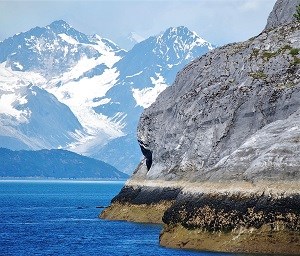
Substrate and ExposureThough tides are the main ruling force, there are many other factors at play in what assortment of marine life you may encounter on a walk along the shore. In some areas, the rough ocean surf batters against unforgiving rock walls, tearing lose any organisms that aren’t well-secured. More common in Bartlett Cove, however, is the relative calm of mud flats and sand or gravel beaches. This is because Bartlett Cove sits more protected from the waves that break along the outer coast, allowing fine particles in the water to settle along the beaches. The differences between the marine life of rocky areas and muddy or sandy areas of Bartlett cove is notable. While deep sand or mud is ideal habitat for a vast number of burrowing animals, including clams, shrimp, and an impressive array of worms, it doesn’t provide much suitable habitat for surface-dwelling species. Even within these substrates, tiny microhabitats where different species thrive are formed by variables like where waves crash, how large the sand particles are, the slope of the area, and more. 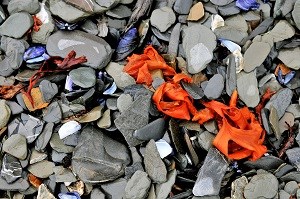
ZonationLooking at a marine shoreline from above, it can often be separated by distinct bands or zones where each individual species can survive. Each organism has an upper limit, where exposure to air and heat would kill it, and a lower limit, where other factors make it difficult to colonize. In general, ecologists think that a species’ upper limit is determined mostly by its tolerance to physical stressors, like heat or air. The lower limits, however, are thought to be determined by biological factors – usually, the presence of predators or competition for space and resources. Look closely to watch this play out between mussels and barnacles in the intertidal zone. The middle intertidal zone is often monopolized by mussels, taking over almost all available space. Higher up, several species of barnacles dominate. This is because these species of barnacles can withstand drying out better than mussels—their upper limit is as high as they can survive desiccation, but the lower limit for barnacles is based on competition for space with the mussels (they are overgrown by mussels). Space and food are two of the most important resources intertidal organisms compete for. Continuing lower into the interdal zone, mussels fade away at their lower limit where starfish being to . This time its predation, not competition for space that determines the limit. Starfish that enjoy a meal of mussels scour whatever individuals stray into their feeding area, preventing mussel beds from taking root. |
Last updated: March 16, 2018


